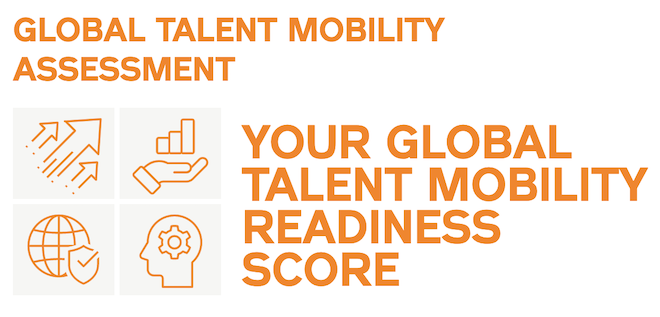
How Technology Enables a Data-Driven Approach to Global Talent Mobility
It is not unreasonable to assume global talent mobility technology will transform the industry in all its facets within the next five years. A bold statement, yes––but not without precedent when you look at the role of technology in transforming industries from automobiles (Tesla) to shopping (Amazon), to human capital management (Workday). If your company is still considering a global talent mobility platform a “nice-to-have” and not a necessity, you will undoubtedly be left behind.
There are four core pillars in which leading global talent mobility programs excel. These are operational efficiency, data maturity, compliance management, and employee experience. In this post, we’ll take a look at how a global talent mobility platform enables organizations to advance their efforts in the data maturity category.
Creating organized data infrastructures
Siloed and fragmented data are all too common in the global talent mobility industry. The lack of a centralized system of record forces mobility managers to look at incomplete data sets coming from various fragment vendors, spreadsheets, and systems. This lack of data cohesion can lead to wrong conclusions, which, in turn, leads to bad decisions for the business. Spending time managing data also pulls teams away from other core tasks they could be doing.
The solution is centralizing data cohesively within a technology platform. By implementing an open cloud platform, your business will be able to organize and centralize all data associated with mobility in a single comprehendible place. This data includes information from vendors, compensation information, tax and immigration status, and more. This data can also include data not necessarily thought of as core to global talent mobility such as political climate, safety, traffic patterns, rent, cost of living, weather, and language of the employee’s new home.
Integrations to unlock new insights
Global talent mobility is a key component of modern talent strategies and lifecycles. As such the typically core global mobility data has implications beyond your single global mobility team. The ability to integrate your global talent mobility platform with other HR, Benefits, and Payroll functions and systems, such Workday, SAP Success Factors ADP and others, is paramount to the success of your business. Bringing together the data from global mobility with broader HR systems will enable companies to engage in more strategic planning — such as “What is the impact on the performance of employees who take assignments?” or “We have an open role in X country requiring Y skillsets – who in our company today could fill that role today”. There are many factors such as scarcity of talent, attrition risk, and many others beyond simple cost that must be considered. Answering these questions requires an integrated data approach across global talent mobility and HR systems.
Taking insights a bit further, the ability to combine mobility program data with unstructured text in surveys, employments reviews, industry publications, and could uncover trends and anomalies that otherwise may have gone unnoticed. The power of this trend patterning will elevate the role of mobility to leadership and make a strong business case for technology to the C-suite. The future of an ever-expanding global economy requires companies to leverage mobility as a core competency––don’t let your business get left in the dust.
Analyze and forecast
An enormous part of managing global talent mobility on a platform is the shift from being reactive to proactive. A manual data collection and interpretation approach is error-prone, time-consuming, and opens up an organization to compliance risk they may not be aware of. Additionally, it is simply not enough for the data to be collected; talent mobility teams must also consistently make sure the data is up-to-date. Moving to a modern cloud-based software platform provides easy-to-use tools for mobility teams to create reports, build dashboards, and analyze all of their data. Mobility teams are then able to look at the data to see what happened historically to predict what will happen going forward.
To summarize:
- Having the right global talent mobility platform enables your organization to achieve the data maturity of a leading global business.
- With cohesive data infrastructures, the ability to integrate across systems and vendors, and actionable data insights, global talent mobility teams can deliver trusted support and advice to the C-suite and broader business.
To see how your organization ranks in the realm of data maturity – from reacting to leading – you can take Topia’s complimentary Global Talent Mobility Assessment.


